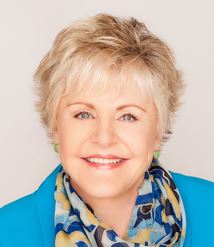5 Ways a Retirement Community Can Help You Grow Your Business

When you help a senior client move into a retirement community you’re serving not just one, but two important clients.
Sometimes we downsizing professionals can get tunnel vision and think that our senior clients, or their families, are our primary focus during a moving project.
But, to grow your business, it’s essential to treat your retirement community sales and move-in teams as a client too, with the same dedication and attention that you do for your senior clients.
Developing a solid, trusting and respectful relationship with your retirement communities is not only good business, it makes your client, the mover, and your team’s move day experience a much more pleasant one.
Why It Offers Benefits for Everyone
There are many ways this working partnership can benefit both sides.
1) Your One-Stop-Resource
When you’ve got a great relationship with your move-in coordinator and sales team, you’ve got a one-stop-shop of resources to draw from when things go wrong (and you know they will) from pre-move planning to move day.
Knowing you can depend on your coordinator (and vice versa) means you can work together quickly to find solutions when an issue pops up.
2) Make Their Lives Easier
It’s your opportunity to show your coordinator all the ways that a downsizing specialist can make their lives easier. A coordinator wears a lot of hats in their day. Things can get chaotic in a busy community, so anything you can do to lighten the load is always appreciated.
Things like making sure the mover truck is parked in the right designated area on move day, keeping the coordinator apprised of issues, and more importantly, taking the initiative to solve issues on your own when you can.

3) Develop Relationships With Everyone On The Team
Retirement communities are the gold standard for sources of new business for us. They provide unmatched volume and a consistent flow of new residents to work with. So, be sure to develop relationships with everyone on the team, starting with the move-in coordinator. It’s also important to include others like the Executive Director, Marketing Director, the sales team, and maintenance workers.
Take time to observe their processes, procedures, and what’s most important to their business mission. They can give you inspiration for new ways your services can continue to support and enhance their organization. When they win, you win.
4) Be their community cheerleader!
I can’t tell you how many times I was asked by a senior client, who was looking for their next home, which communities I thought were great places to live. After multiple moves, you’ll feel like a community is just as much your home as it is for your clients. So, sing their praises when it’s justified!
Share the stories of happy residents and what makes that community special! It’s amazing how fast that gets back to community management and how much they appreciate your heartfelt support.
It shows your commitment, respect, and appreciation for the working relationship you share.
5) Ask for Cross-Referrals.
The senior service industry is a tight-knit community, so don’t be afraid to ask for their help if you’re trying to make inroads with other community teams or businesses.
The key here is that you only ask if you’re doing such a wonderful job for them that it would be a no-brainer to want to help you.
The information highway goes two ways though. If you have information or a client connection that might be helpful to your retirement community team, don’t hesitate to offer your help.

Ways You Can Help That Relationship Grow
So, what are some other ways you can help that relationship grow?
1) Communicate, communicate, communicate!
I’m not saying overwhelm your community clients with too many emails or phone calls. Just keep them in the know on important move-related or client issues that could affect a move-in date or other internal processes.
If there’s an issue they’ve asked you to resolve, be sure to follow up with them until its completion. Never assume that the client has shared information. Written communication is preferred over a phone call. It’s good to have something to refer back to if needed and they can access it based on their availability. For more tips on this check out the Downsizing 101: Skills, Strategies and Tools course!
2) Walk your talk.
If you say you’re going to do something, make sure you do it and do it well. It’s key to developing that level of respect that’s so essential to any business relationship. Don’t be afraid to let them know if there’s something that is preventing a completion deadline. They may be able to help, but worse case, you’re keeping them apprised so there are no last-minute surprises.
3) Ask for feedback.
From time to time, ask your community team for feedback on how you’re doing. This is especially true of your move-in coordinator who has the most daily interaction with you. Are they pleased or do they have some suggestions for ways you can improve your service? The last thing you want is to find out you’re losing a key client because you weren’t living up to their expectations and never asked.

4) Have your clients share their positive feedback on your service.
If you have glowing client testimonials from happy patrons, ask them to share them with community management and other residents (once they’re moved in). Nothing means more to a community than hearing that their residents are happy with the service that you’ve provided them. It gives the community peace of mind that they made the right decision to refer you. It also means they’ll be more apt to refer you to more residents in the future.
Some of the best working relationships I’ve ever had in my career were with retirement community teams! It’s worth every ounce of energy you can muster to find ways to enhance and honor that relationship as you grow your business. It’s a blessing for them, for you, and your clients!
Want more information on ways you can improve your services when moving a client into a retirement community? Check out my Tips and Strategies for a Stress-Free Retirement Community Move course guide! It’s full of specific tips that will help you and your client successfully navigate the unique challenges of a move into a retirement community.
Deborah

